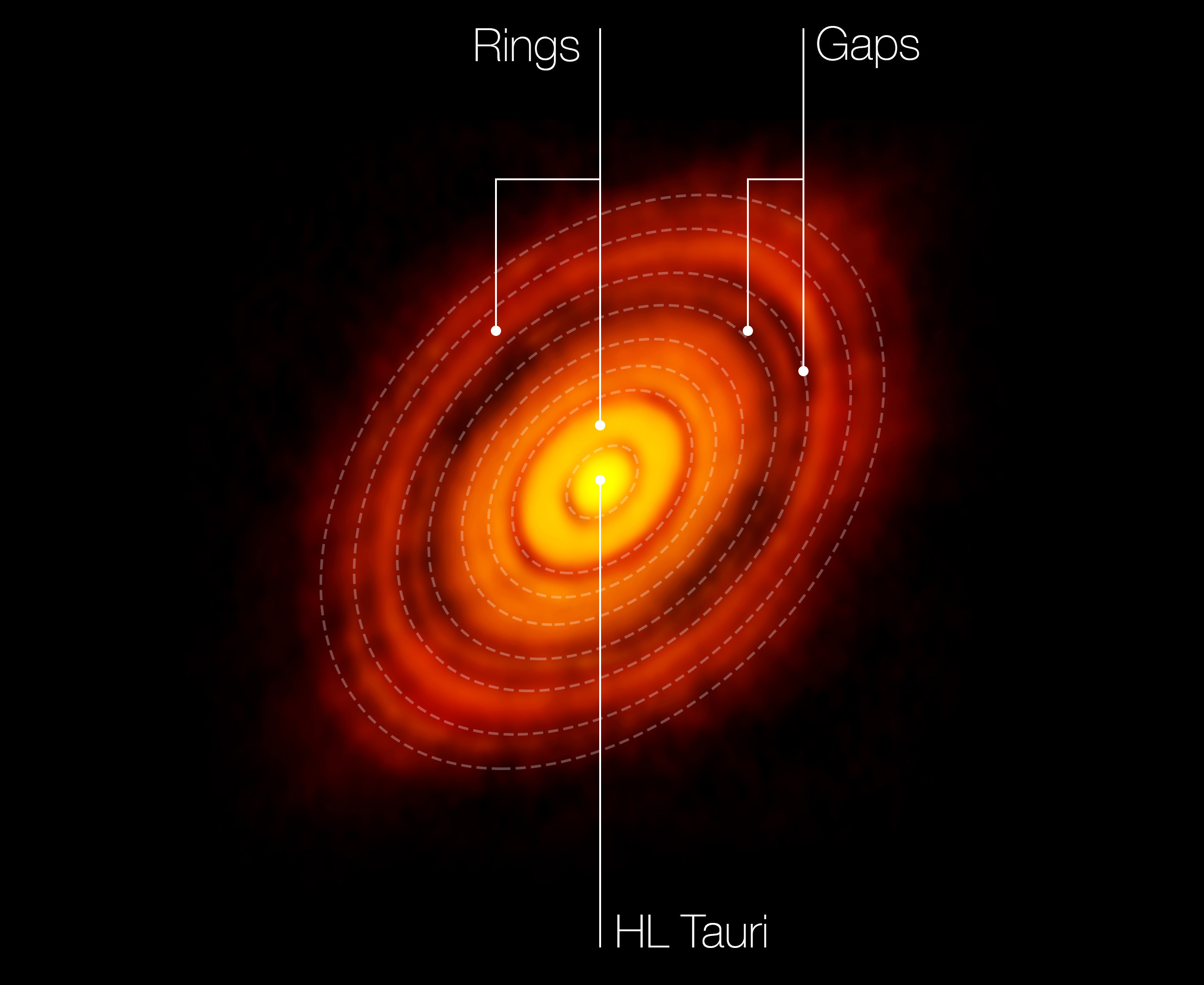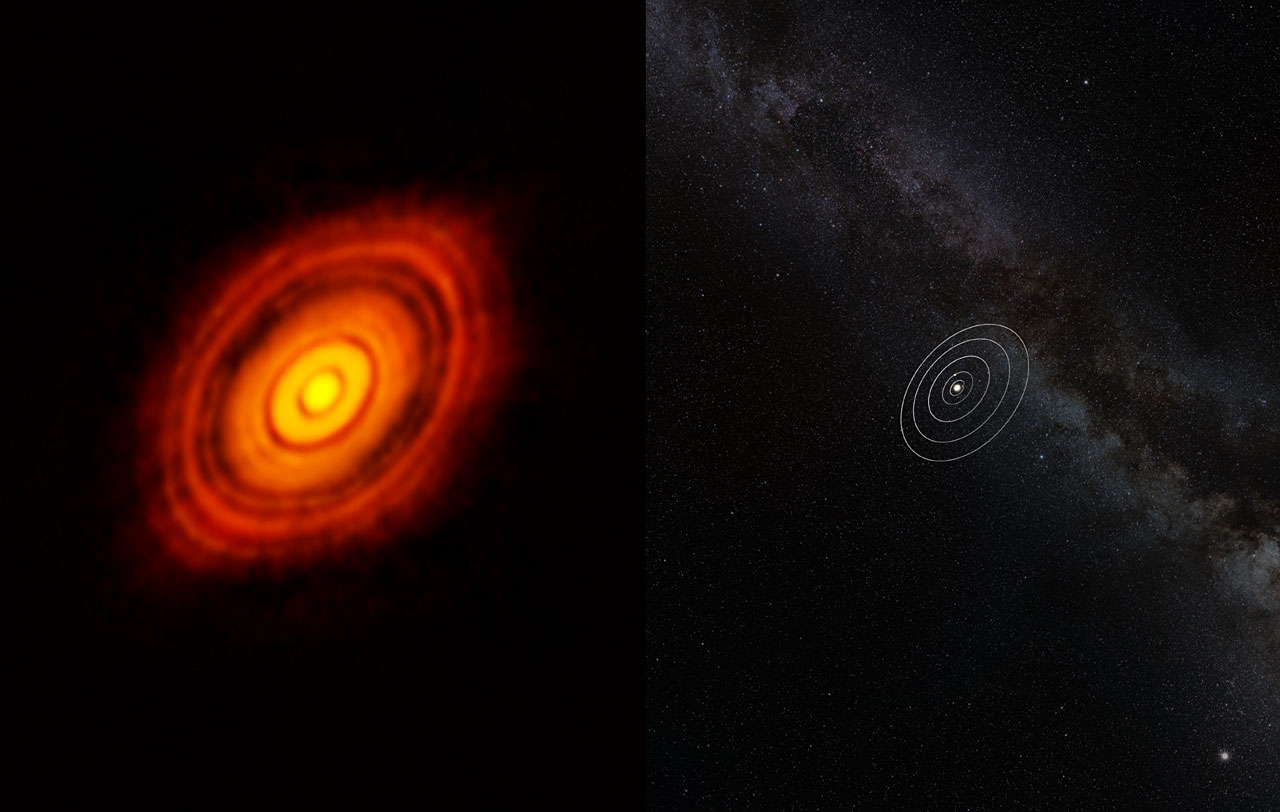Rings in the protoplanetary disk of a young star may indicate the formation of planets

Constellation Taurus, HL Tau system. Photo: Hubble.
Since the end of last year, the astronomical world has been actively discussing a unique image obtained from the Chilean Observatory with the help of the Atakam Large Millimeter / Submillimeter Lattice ( ALMA ), extremetech.com reports . It shows clear gaps in the protoplanetary disk around the star HL Tau. When analyzing this image, the opinions of astronomers were divided: some believe that these gaps are evidence of the early formation of planets around a star from a protoplanetary nebula, while others believe that such a system is stable and there can be no planets. An astronomer team led by Daniel Tamayo of the University of Toronto thinks that this image shows us an early stage of planet formation. Much points to the fact that he and his colleagues are right.
By stellar standards, HL Tau is still very young: according to various estimates, its age ranges from one hundred thousand to one million years. The star is located at a distance of 450 light years from Earth in the constellation Taurus. The image obtained by ALMA in October 2014 was the result of the calibration of the device, that is, in fact, it was obtained by chance. None of the astronomers did not expect to receive the image of the star HL Tau in a similar high quality. Now this is the best shot of a star in the entire history of observations.

HL Tau system. Clickable
')
Daniel, like many other scientists, was initially skeptical about the idea that the image captured by ALMA reflects the early stage of the formation of planets in a protoplanetary disk. We know that during their formation large planets “cut out” the rings of emptiness in the gas cloud around the star, however, in the HL Tau star images, these rings are too close to each other. Using the example of our solar system, the orbits of gas giants are located at great distances from each other, which rules out a serious gravitational interaction between them.
At first, Tamayo modeled a similar system with gas giants the size of Saturn and more, but the results showed a powerful gravitational interaction between the planets, which would lead to their descent from orbits.
Model of a non-resonant system.
This data absolutely did not fit into the picture obtained with the help of ALMA. The researcher did not stop at a negative result and continued his work on modeling. This time the “resonant” configuration of the star system was chosen and the image obtained by the Chilean Observatory began to make sense.
Model of the resonant system.
The essence of the resonant system is that the planets may have orbits that are very close to each other, or even intersect in certain places, but the speed of rotation of the planets around the star is such that they never interact gravitationally with each other. A vivid example of this: the planets Pluto and Neptune of our system. They have a point of intersection of the orbits, but rotate around a star at such a speed that for billions of years they didn’t seriously affect each other. The resonant model of the HL Tau system, created by Daniel Tamayo, is perfectly combined with the image obtained by ALMA. Based on his assumptions, even if all five planets have the size of Saturn, with such a configuration, they can remain stable.

This image compares the size of the solar system and the protoplanetary disk of the HL Tau system. Although the star under study is much smaller than ours, the HL Tau disc is almost three times larger than the distance from the Sun to Neptune. Clickable
Thanks to the research team Tamayo, empty rings in the protoplanetary disk around HL Tau, which we see in the ALMA image, can be evidence of the presence of planets. But there is one big "BUT". Calculations in the simulation of the resonant system were carried out taking into account the gravitational interaction with the protoplanetary disk. Once it is dispersed, the entire system of gravitational interaction can “collapse” and become non-resonant, as in the first video. It is likely that other systems have gone through this, since the orbits of many planets have very similar, eccentric orbits. Our solar system may have been simpler to form.
Source: https://habr.com/ru/post/365493/
All Articles